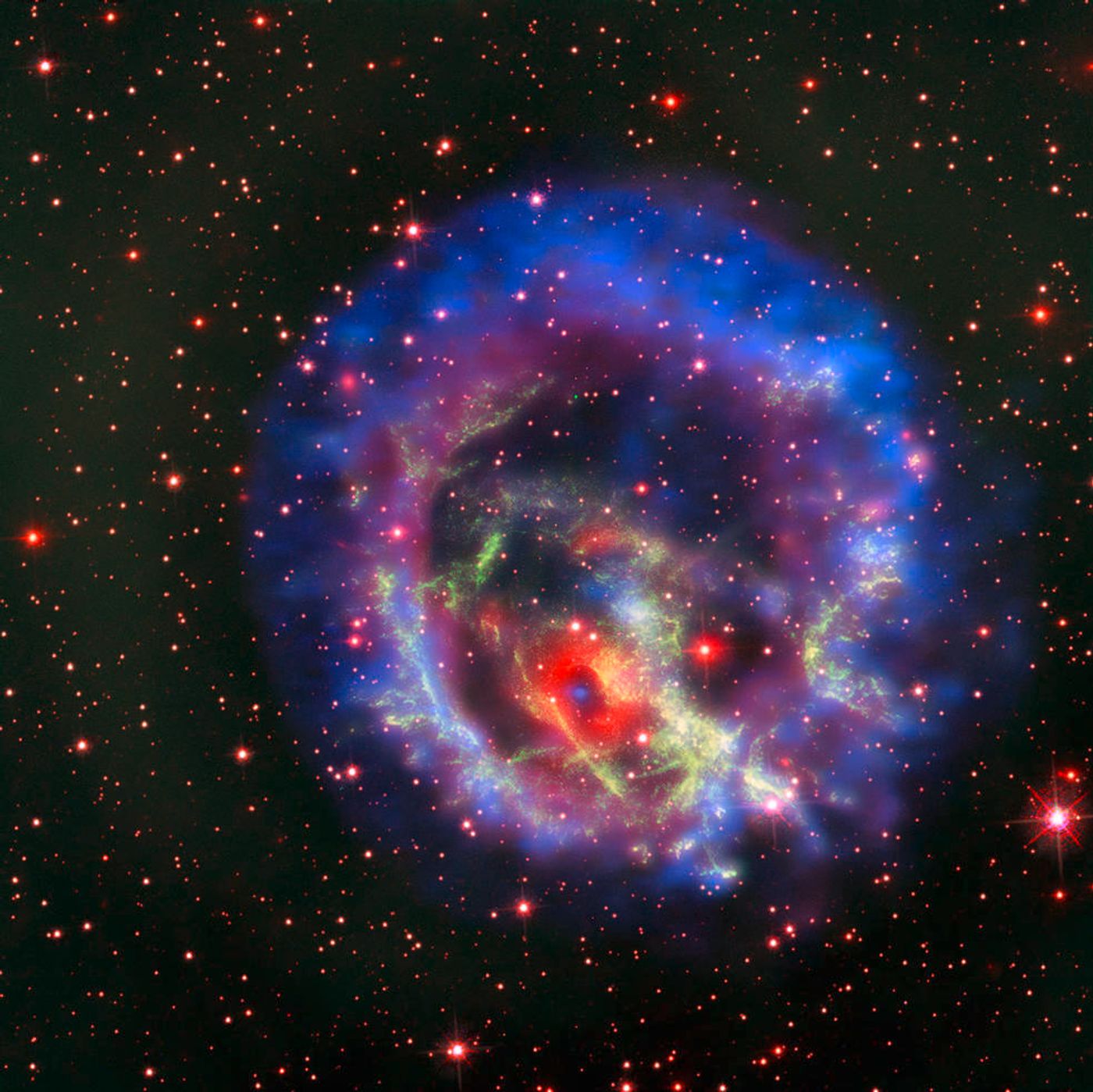Peculiar Neutron Star is Both Far Away and Lacking a Companion
1E 0102.2-7219 is the name given to a newly-discovered neutron star that astronomers discovered while observing the distant reaches of outer space with NASA’s Chandra X-ray telescope and the Very Large Telescope (VLT) in Chile.
Image Credit: X-ray (NASA/CXC/ESO/F.Vogt et al); Optical (ESO/VLT/MUSE & NASA/STScI)
Residing approximately 200,000 light years away from Earth in the Small Magellanic Cloud, 1E 0102.2-7219 doesn’t have a stellar companion like many other neutron stars do and sports a lower magnetic field than astronomers expected.
A paper describing the findings can be found in the journal Nature Astronomy.
A statement released by NASA this week explains how the supernova explosion that created 1E 0102.2-7219 transpired almost two millennia ago. The composite image above depicts a colorful gas ring expansion consistent with the explosion’s blast wave.
Astronomers purportedly know of at least ten objects in the Milky Way that are like 1E 0102.2-7219 regarding its oxygen-rich composition and distinctive characteristics. Nevertheless, it’s the first stellar object of its kind to present itself outside of the Milky Way.
Related: Do neutron star collisions create the heaviest elements?
If you look closely, you’ll notice how the neutron star seems is offset from the center of the gas ring expansion. Astronomers are still trying to figure out why this is the case, but at least two potential theories come to mind.
One of the theories proposes that forces from the initial explosion sent the neutron star drifting in one direction, while another suggests that the object was always in motion and continues to move.
Neither theory comes without its complications, but astronomers are still in the middle of working out the kinks. NASA implies that additional research with the help of more observatories – perhaps like the upcoming James Webb Space Telescope – may shed light on some much-needed answers.
Related: Hubble spies on the source of neutron star-driven gravity waves
Until then, the finding will remain a fascinating enigma.
Source: NASA









